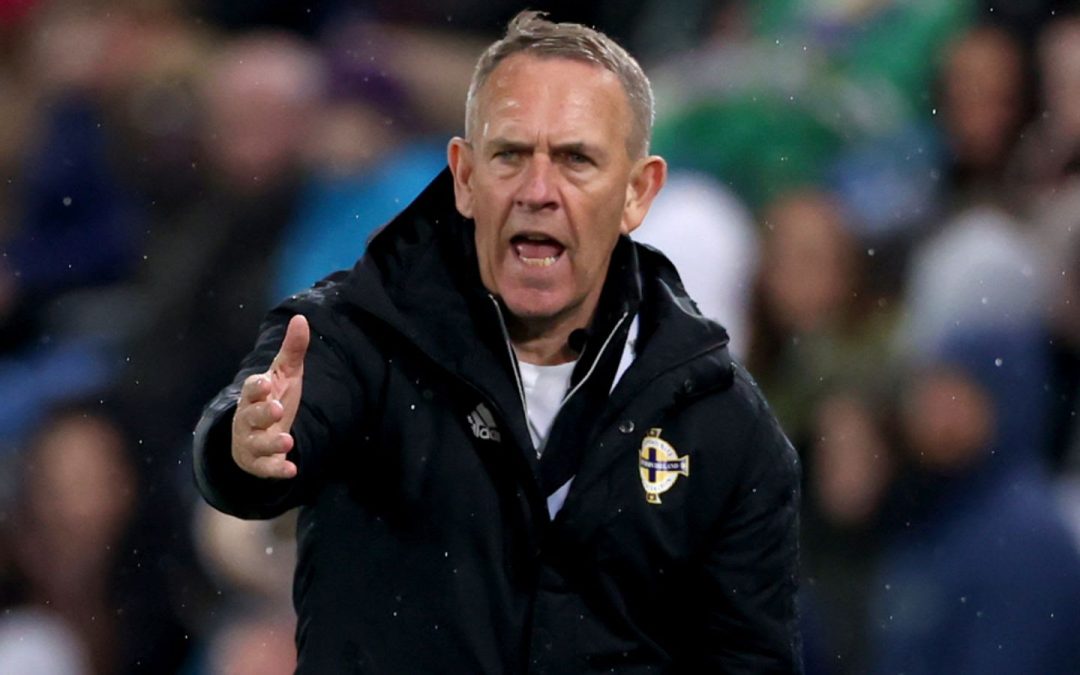There are many ways of telling that someone has performed badly in an interaction with the news media.
One of the most obvious signs is that if – after giving a particularly silly or reckless answer – they blurt out something like “I should not have told you that!”
It may sound unlikely, but these are the exact words that have come from the mouth of the man in charge of the Northern Ireland Women’s Football Team.
They’re from Kenny Shiels who – in my modest professional judgement – is in desperate need of the most urgent interview response training sessions.

The good news is that if Kenny Shiels gets sufficient high quality media training rapidly enough, it could help him to tear himself out of 1950s and launch him – kicking and screaming – towards the 2020s.
In fact, Kenny Shiels needs media interview response training before he ever goes near a camera or a microphone or a journalist – or a female sports star – again!
Media interview response training helps you give great answers to blowtorch-on-the-belly questions – and to give professional replies to other softer questions to which interviewees always need to be ready.
If you say something within a media interview response training session and it’s going to get you into a lot of trouble, it will be pointed out to you.
You might even notice it yourself.
Kenny Shiels was at least smart enough to spot his own gaffe once he’d blurted it out.
But by then it was too late.
Alas he’d already shared it with media outlets around the world.
He identified the gaffe during his own post-match press conference with his signature giveaway line: “I should not have told you that!”
If you identify something you’re saying in a media training session that will be unacceptable to the wider public – or if someone else spots it – you will learn to avoid saying that same thing in the same way during a real live media interview encounter!
That Kenny Shiels’ 1950s moment came when he tried to explain how his Northern Ireland team managed to concede 5 goals in its big World Cup qualifying match against England.

The bit he realised that he should not have told us was his personal theory that women are more emotional than men.
As a result, Kenny Shiels explained, when women concede one goal in football they’re more likely to concede more goals in their immediate emotional aftermath.
It’s a controversial theory which relies on the Kenny Shiels’ stereotypical view that all women are excessively emotional.
If he had been through any media interview training before his team lost 5-0 at Wembley Stadium, then he managed to hide it frighteningly well.
THE KENNY SHIELS MEDIA OWN GOAL
Take a look here at how Kenny Shiels managed to score his spectacular own goal!!!
Perhaps not surprisingly – in the immediate aftermath of his media performance – Kenny Shiels was inundated with public criticism.
It came from women and it came from men.
In fact, there was so much criticism that it made him feel – some time later – the need to publicly apologise for what he’d bumbled his way into.
He may not have learned everything he needs to from this gruelling experience.
But it’s still not too late for him to discover that giving great professional answers is a learnable skill.
MEDIA TRAINING ON PUBLIC DISPLAY
Media interview response training sessions are routinely done on a confidential basis – and well away from the eyes of the real media.
Yet the good news is that on rare occasions, someone very community-spirited, allows themselves to help show how media training works in front of a live audience.
Such was the case involving my heroic Professional Speaking Association colleague, Ges Ray, who selflessly volunteered to perform as a media training model in front of an audience of professional speakers.

By viewing the performance, you can see how the content, structure and delivery style of an answer can be transformed from bad to great in a short space of time.
This video doesn’t show everything that happened between the bad and the great media responses, but it reveals enough to give you an initial indication of how to make the jump between the two.
It underlines the importance of going into every media interview with your own positive and thoroughly-tested messages to convey.
If you have any dud messages, you’ll learn how – by sharing them with colleagues before it’s too late – it can help you avoid trashing your own reputation!
And it highlights just how important it is to anticipate tough questions in media interviews – and get yourself ready to reply to them.

In media interview response training sessions, you heighten your sense of what will work in a real live media situation – and what won’t work.
There’s more about media interview response training at:
http://www.michaeldoddcommunications.com/media-master-classes/
If you miss spotting an error you’ve made during a media interview response training session, it’s the media trainer’s job to alert you.
The media trainer will typically suggest that you reconsider any flawed theories, any trouble-prone arguments and any planned atrocious answers that will make you or your organisation look silly.
It will feel like there’s a media superhero on your side!

Media interview response training sessions are also fun.
And the particularly good thing is that they’re designed to help you BEFORE it becomes too late!

